1. ENDODONTIC MISHAPS
1.1. Access related
1.1.1. Treating the wrong tooth
1.1.2. Missed canal
1.1.3. Damage to existing restoration
1.1.4. Crown fractures
1.1.5. Access cavity perforations
1.2. Instrument related
1.2.1. Ledge formation
1.2.2. Cervical canal perforations
1.2.3. Midroot perforations
1.2.4. Apical perforations
1.2.5. Separated instruments and foreign objects
1.2.6. Canal blockage
1.3. Obturation related
1.3.1. Over- or underextended root canal fillings
1.3.2. Nerve paresthesia
1.3.3. Vertical root fracture
1.4. Miscellaneous
1.4.1. Post space perforations
1.4.2. Irrigant related mishaps
1.4.3. Tissue emphysema
1.4.4. Instrument aspiration and ingestion
2. CAUSES
2.1. Lack of straight line access
2.1.1. Improper access prepartion
2.1.2. Compromise the negotiation of the apical third of a canal through improper coronal flaring
2.2. Anatomy of the canal
2.2.1. Length
2.2.1.1. Longer canals have a greater potential for ledge
2.2.1.2. Recapitulate to confirm patency
2.2.2. Canal Diameter
2.2.2.1. Smaller diameter canals have greater potential for ledge
2.2.3. Degree of curvature
2.2.3.1. Degree of curvature increases, the potential for ledge increases
2.3. Inadequate irrigation or lubrication
2.3.1. NaOCl is a good irrigant, but an additional lubricant is neccessary
2.3.2. Lubricants allow for ease of file insertion, decrease of stress on instruments, and ease of of debris removal
2.4. Excessive enlargement of the curved canals with large files
2.4.1. Instruments have the tendency to cut straight ahead and straighten out.
2.4.1.1. Files cut dentin toward the outside of the curvature at the apical portion of the root, a process called transportation.
2.4.2. Transported tip of the file may gouge into the dentin and create a ledge or perforation outside the original curvature of the canal
2.4.3. Don't jump a file size.
2.5. Obstruction or the packing of debris in the apical portion of the canal
3. Correction
3.1. Recognition of a ledge is the first step in its management; this might be by
3.1.1. clinical
3.1.2. radiographic observation with the instrument placed at the point of the suspected ledge
3.2. Canal first must be relocated and renegotiated
3.3. One technique is to use a precurved (1 to 2 mm apically) small file to re-establish correct working length
3.3.1. Use plenty of lubrication
3.3.2. Use a picking motion
3.3.2.1. If the true canal is located, use a reaming motion and occasionally an up-and-down movement to maintain the space and débride the canal
3.3.3. Flaring the access may help improve access to the apical third of the canal
3.4. Despite all effort, correction of a ledge is difficult because instruments and obturation materials tend to be directed into the ledge.
3.5. If unable to bypass ledge, clean and shape at the "new" working length.
4. Prognosis
4.1. Successful treatment after ledge creation depends on the extent of debris remaining in the region past the ledge.
4.1.1. The amount of debris depends on when the ledge formation occurred in the cleaning and shaping process.
4.1.2. Short and cleaned apical ledge have better prognoses
